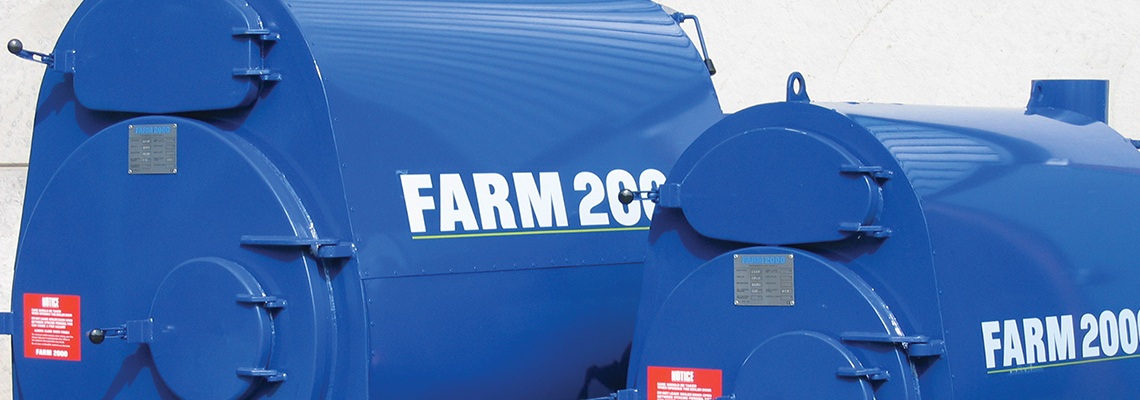Sizing Guide
The first thing is to establish the maximum heat demand. This should be done by your heating engineer, but also take reference from your current boiler, or approximate from the volume and insulation standard of the building as follows:
| Period | Insulation Standard | Max. Heat Demand |
|---|---|---|
| Pre 1960 | Poor | 4.5 Btu/hr 0.046 kW |
| Approx. 1980 | Medium | 3.5 Btu/hr 0.036 kW |
| 2005 onwards | Good | 2.5 Btu/hr 0.026 kW |
Example 1 : A pre-1960s farmhouse (3 – 5 bedroom)
Cu. metres 18 x 10 x 5 = 900 cu. m. x 0.046 = 41.4 kW
(Plus hot water 7000Btu/hr or 2kW) = Approx. 160,000 Btu/hr or 43.4 kW
Example 2 : A modern farmhouse (3 – 5 bedroom)
Cu. metres 18 x 10 x 5 = 900 cu. m. x 0.026 = 23.4 kW
(Plus hot water 7000Btu/hr or 2kW) = Approx. 92,000 Btu/hr or 25.4kW
Choosing your boiler
Once you have established the maximum heat demand, the boiler can be selected from the FARM 2000 Boiler Selection guide according to the main fuel and required stoking frequency.
The less often you want to stoke the boiler, the larger it has to be. Therefore, when using bulkier fuels (straw vs wood), a larger boiler should be selected.
Many FARM2000 customers use a combination of both fuels, using wood in the coldest periods and straw for less severe conditions. e.g. HT45 on wood can maintain the same heat output as HT60 on straw.
How much wood or straw will be required?
As a rough guide, when burned in a FARM2000 batch boiler, 1kg of dry straw (max. 16% water content) or wood (max. 20%) will provide approximately 2.6 – 3.0 kWh or 9,000 – 10,000 Btu’s.
Bear in mind that maximum heat demand is normally calculated at -1 deg.C. The average 6 month heating season consumption, based on a thermostatically controlled system, is usually 30-40% of this. See boiler size guide.
Oversizing for reduced stoking frequency with extended output
In order to keep stoking frequency to a minimum, it is usual to install a boiler with a higher maximum output than the maximum heat demand of the building. The boiler operates for just a few hours per day with the heat being stored in a large accumulator (heat store) for controlled and continuous output.
The graph below shows how supply of heat is smoothed over time by using an accumulator.


